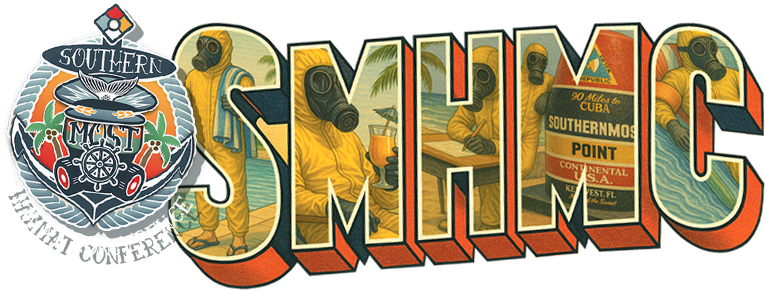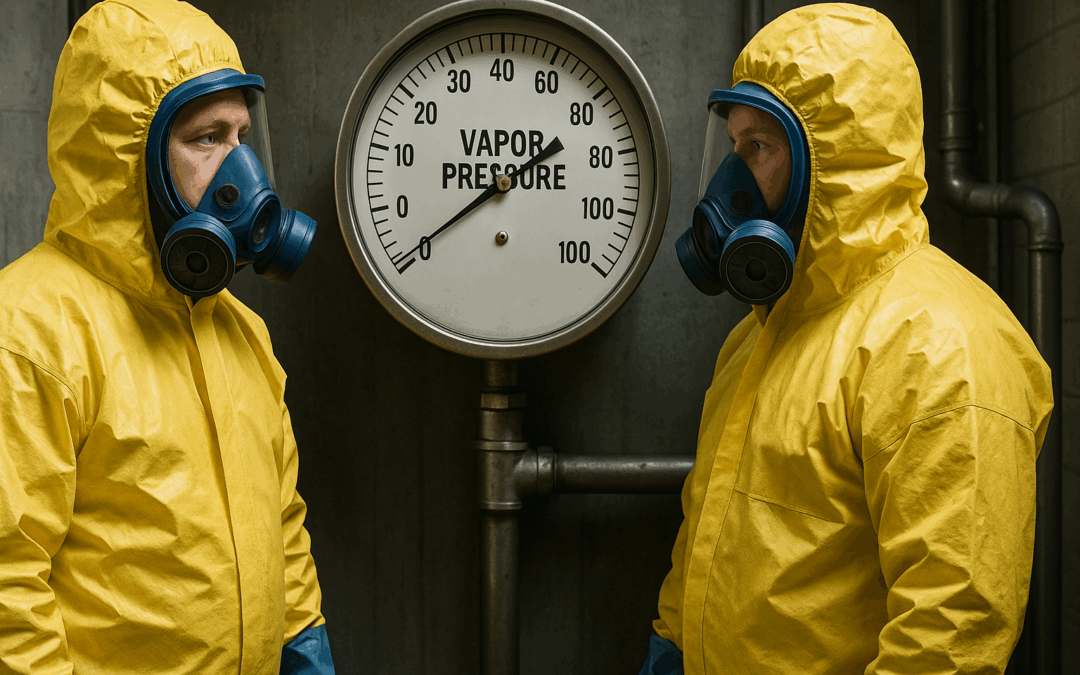Vapor Pressure: The One Thing Every Hazmat Responder Needs to Know
I sat down with Bobby Salvesen and Mike Monaco – better known as The Haz Mat Guys – to talk about something that honestly should’ve been covered way earlier in their podcast series: vapor pressure. Turns out, this fundamental topic had somehow slipped through the cracks until now. And once we got talking, it was clear why it deserved its own spotlight.
Why Vapor Pressure Deserves Top Billing
“Flat out, vapor pressure is probably in the top five things I need to know during a hazmat call,” says Bobby.
He’s right. If a chemical incident lands on your lap and you don’t know how that substance behaves in the open air, you’re flying blind. Vapor pressure is the indicator of how badly a substance wants to become a gas. And that changes everything – from how fast it spreads to what gear you should be wearing.
Mike put it bluntly: “People still have a hard time understanding, okay, well, what does that mean to me?”
Let’s answer that.
What Is Vapor Pressure, Really?
At its core, vapor pressure is a measurement of how much a substance is pushing its molecules into the air. It’s a physical property – just like boiling point or viscosity – and it can be quantified in units like millimeters of mercury (mmHg) or atmospheres (atm). In Europe, you might see kilopascals (kPa), but here in the U.S., mmHg is more common, especially in the NIOSH Pocket Guide or on Safety Data Sheets (SDS).
The higher the vapor pressure, the more aggressively a liquid becomes a gas. That’s it.
You can’t see it. But you’ll feel it when you walk into a space and the chemical meets you at the door. That’s not magic. That’s a substance with high vapor pressure doing its job – reaching equilibrium with the atmosphere by evaporating fast.
Vapor Pressure vs. Volatility: Not the Same
Here’s where it gets sticky. A lot of folks use “vapor pressure” and “volatility” like they’re interchangeable. They’re not.
Think of vapor pressure as the measurement. Volatility is the tendency. One is the number on paper, the other is how quickly the substance will take off into the air in real life.
To put it in their words: “Volatility is more of a relative term – it needs reference. Vapor pressure is a number. It’s tangible.”
This distinction matters when deciding how dangerous a chemical release might be. A volatile chemical might not have an extreme vapor pressure, but in the right conditions (like heat or vacuum), it still gets dangerous real fast.
Why Temperature and Pressure Matter
The higher the temperature, the higher the vapor pressure. That’s science.
Mike illustrated it perfectly: “You go into your shed in mid-August and that gas can is puffed up. Crack it open and you’ll hear the pressure push out.” Why? The heat increased the internal vapor pressure.
And it goes both ways. In winter, the same can looks like it’s been vacuum-sealed. The vapors condense, and the pressure drops. Same product, different season, totally different behavior.
That’s why standard temperature and pressure (STP) exists – so we’re all talking about the same conditions (usually 68°F and 1 atm). Otherwise, you’re comparing apples to oranges.
Real-World Hazmat Implications
Here’s where the rubber meets the road.
Let’s say you come across a bulging drum. First instinct? “Oh crap, it’s going to blow.” But maybe not.
“It could be pressurized. It could be in a vacuum. It could be equilibrium. We don’t know,” says Bobby. And that’s why you have to know the vapor pressure and how the environment may have changed the container.
Or picture a gasoline spill in the summer. Same liquid, same scenario in January? No big deal. In July? Now you’re worried about ignition, flammable vapor clouds, and PPE changes.
Knowing the vapor pressure and its response to temperature tells you if that chemical is coming to meet you – or if you’ll have to go meet it.
Why Molecular Structure Matters
Mass and shape matter. A lighter molecule, like methane, needs less energy to go airborne. A heavier molecule, or one with polarity (like water), sticks to its buddies and resists vaporizing. That’s why water stays liquid longer, even though it’s lighter than methane.
And then there’s polarity. Water’s polarity keeps it in a liquid state longer, while methanol, which is similar in size but less polar, evaporates faster.
Vapor Pressure Drives Everything From PPE to Tactics
This is the part most people miss. Vapor pressure isn’t some academic number tucked away in a textbook – it affects every tactical decision in the field.
If a substance has high vapor pressure, you need to rethink:
- Your PPE: Are you using the right respirator or chemical suit?
- Your monitoring tools: Are your meters calibrated to pick up what’s in the air?
- Your approach: Should you ventilate, isolate, or evacuate?
“It’s one of those five or six things you have to know inside and out,” says Bobby. “There’s no magic eight ball. You just need to understand this stuff well.”
The Case for Conferences and Continued Learning
Before we wrapped up, Bobby and Mike plugged a few conferences like the Baltimore hazmat show and their keynote in Pennsylvania. But it wasn’t just self-promotion. It was about community and growth.
“If you’ve been doing this a long time, you’re not going to walk away with boatloads of new info,” Mike admits. “But you’ll pick up tidbits that make you go, oh shit, look at that.”
And those nuggets? They add up.
Final Thoughts: Learn Vapor Pressure Like Your Job Depends on It – Because It Does
If you’re in hazmat and you don’t understand vapor pressure, you’re not just behind – you’re gambling. Knowing this physical property can save your life, your team’s, and the people you’re there to protect.
Get familiar with it. Use SDSs. Understand how temperature, pressure, molecular structure, and polarity all come into play.
This isn’t theory. It’s operational intel.



Thanks for posting and VP I always felt in my many moons of on the job was vital. I had a discussion years ago then the above the line below the line came out. I know Joe who was one of the creators. And it’s a good tool but it never talked about VP which in your discussion here is tremendously valuable. I enjoy reading your page and always learn even after 40 yrs of the business. And even though I’m retired I try to attend a conference or two to stay up on the technology to as I still am actively teaching. Anyhow thanks for the subject discussion. Stay safe out there.